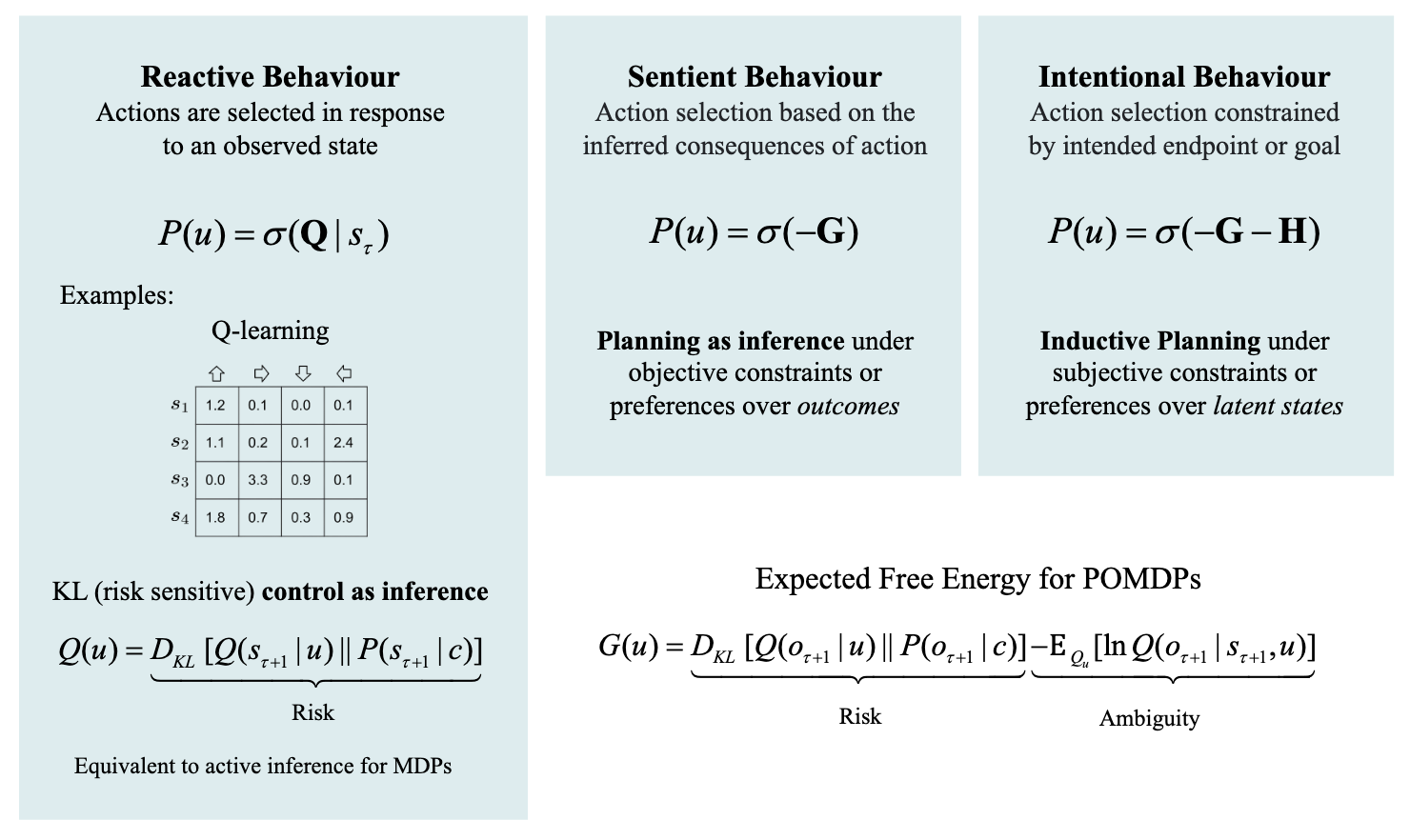Active Inference is a theoretical framework in Computational Neuroscience that describes how biological systems, particularly the brain, interact with their environment to minimize uncertainty and maintain homeostasis. It stems from the concepts of the Free Energy Principle and Bayesian Inference, proposing that organisms actively infer the causes of their sensory inputs and take actions to fulfill their predictions about the world.

Figure 1 shows three types of behavior: Reactive - simple reflex responses to stimuli; Sentient - perception and response to environmental changes; Intentional - goal-directed actions based on future predictions.
Reactive, Sentient, and Intentional Behavior
We distinguish three kinds of behavior: reactive, sentient, and intentional (Figure 1). Reactive behavior is the simplest and involves reflexive responses to sensory inputs. Sentient behavior involves a more complex interaction with the environment, where an organism can perceive and respond to changes in its surroundings. Intentional behavior is the most sophisticated, involving goal-directed actions based on predictions about future states of the world.
This note is very barebones despite the complexity of the subject, as I have the book now, will be reading it after Gödel, Escher, Bach.